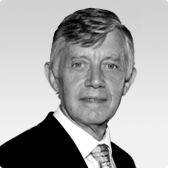By Graeme Colley

It’s important to keep your SMSF and personal assets separate, and that there’s no confusion in terms of who owns what. It may sound like common sense, but failure to do so can have serious legal consequences. You can be fined up to $4,200 or even disqualified as a fund trustee.
Separating assets helps clearly identify those belonging to the super fund. This can assist with the accounts for the fund and when calculating each member’s balance. It also helps in difficult situations such as divorce, death of a member and in the unfortunate situation where a member may be insolvent and facing bankruptcy.
In a divorce, a member is entitled to find out information about their partner’s benefit in the SMSF for purposes of the marriage settlement. If the members have mixed personal with fund assets, the member’s account balances may be incorrectly calculated and could result in one partner getting a higher or lower share of the fund assets than they should.
Upon the death of a member, the correct identification of fund assets and member balances will help ensure the right amount is paid by the fund to the deceased’s beneficiary. Without clear delineation, fund assets could end up being included in the deceased’s personal estate – and with the possibility of delayed payment due to probate.
Insolvency of the member poses a number of difficulties. While superannuation benefits are protected from creditors, the fund assets must not be confused with personal assets. Creditors may make a claim on them if they are not identified as an asset of the fund. If a member is declared bankrupt (insolvent), their super benefit must be transferred to another fund as they are not permitted to be a trustee of any superannuation fund during the bankruptcy period. Incorrect identification of assets may mean a reduction in the amount accumulated in super.
SMSFs have a choice of two trustee structures. Either an individual trustee structure. Or a corporate trustee, where the fund members are directors of the company. Mixing of assets is more likely to occur in an individual trustee structure, making a corporate trustee the better option for asset delineation.
There are also other benefits of having a corporate trustee. As the fund assets and investments are held in the name of the company, there’s no requirement to change the ownership of the assets should a new member join or an existing member leave. In contrast, if the trustee is made up of individuals, each time the fund membership changes it’s necessary to change the legal owner of the assets. In some cases, this may involve stamp duty and other costs
In some situations, it’s not possible to register an asset in the fund’s name, for example, real estate which requires the property to be held in the name of the individual trustees or the corporate trustee. To ensure that an asset is clearly identified as belonging to the fund, it may be necessary for a declaration of trust to be made over the property, or that there is a covenant made by the trustee over the real estate.
As an example of what could happen, Nic and Sarina are the individual trustees of their SMSF. When Nic goes to the bank to set up an account for the fund, he lists it in their personal names without reference to their SMSF. The fund then purchases shares which are recorded as being in his personal name. Some time later they decide to separate, and Nic makes the claim that the bank account is a joint personal account and the shares are owned by him personally.
As another example, Rob and Naomi have an SMSF which has a corporate trustee. Rob owns a factory in which he operates a family business. He decides to sell the factory premises to the SMSF but to save on stamp duty leaves it in his own name. Unfortunately, Rob dies in an industrial accident, with his will listing two children from another marriage as beneficiaries. A dispute arises as to whether the superannuation fund or Rob is the owner of the property.
Had the bank account, shares or the industrial property been recognised correctly as belonging to the superannuation fund, these issues would probably not have arisen.